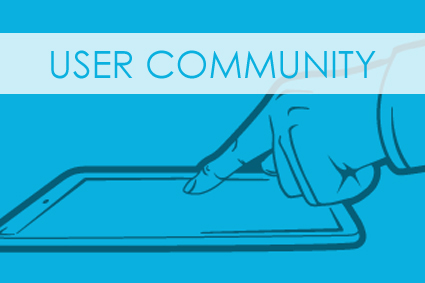In my previous blog, I wrote about the importance of hiring support professionals with strong communication skills. I indicated a support professionals’ written and verbal communication skills are as vital to successful support operations as their technical capabilities. Particularly, your support staff’s verbal and written skills are essential when interfacing directly with customers.
To cultivate an optimum support experience, your staff only partially represents what’s required to maintain communication and keep customers happy. A user community represents another significant factor in the customer support equation. This blog focuses on building a user community and ways to sustain customer loyalty.
Cultivate a User Community
At Avatier, we manage a significant user base. Over the next few months, our mission is to develop a user community. My experience with customer support user communities is they start off slow. They usually offer a way for users to research issues while providing another way for users to submit tech support requests. Often they take some time to take hold, but in a few short months questions start being addressed by peers from other companies. How does this transformation happen?
It can be a little tough at first. People are hesitant about speaking up in a community especially one that doesn’t already have much activity. As the overseer, how quickly the community catches largely depends on you. During the early weeks and months after launch, your level of engagement becomes essential to fostering a community. Always pay attention to ensure every question gets answered promptly and responses encouraged. After a while, the community becomes nearly self-sufficient.
Given the community’s benefits, the resource represents a modest investment. A community enables users to help one another. They ensure answers from support reps and fellow users are persistent and searchable for all, and serve as a powerful example of your attentiveness to customer needs.
Provide a Customer Support Escalation Path
Once your customer support user community is in full operation, you can assume not all customer issues will be addressed. We rarely experience angry customers. When it does get to the point where a customer is unhappy, it’s good for them to know there’s a next step. This means providing an escalation path.
For security reasons, we compartmentalize access to the deepest level of user information to "Tier 2," a subset of the team. Tier 2 escalation happens in a couple of ways:
- The "give and go": A Tier 2 agent is looped in long enough to carry out necessary research before passing the issue back to the original agent.
- The "handoff": In cases where the best thing is for a customer to hear from another person, the ticket is transferred to a Tier 2 agent and the original rep is released from it.
Before a Typical Customer Support Handoff
Before escalating a customer support issue, another effective tactic, whether a customer is unhappy or simply facing a more complex problem, is to utilize WebEx. The advantage is to utilize screen sharing, which can simplify problems and communication too.
Another option is to provide a direct line of contact to someone at the top. We provide a way for our customers to email our CEO directly. Customers like knowing there’s someone at the top that listens.
Integrate Customer Support with Customer Success
Like most successful companies, Avatier’s support operations include a Customer Success Team. Our Customer Success team performs a critical role in our business. While our Technical Support team responds to customer troubles, our Success Team ensures they’re happy and getting maximum value from our solutions. Be sure to keep success and support teams aligned. To do so, we keep Customer Success managers on alert, when the customers they work with open tickets.
By cultivating a customer support community, providing an escalation path, and integrating success teams, you develop customer loyalty. Considering the cost of attracting new customers compared to maintaining existing ones, healthy companies sustain a loyal customer base. For this reason, your efforts toward empowering customers and building strong relationships become essential to your success as a leader.
Get the Top 10 Identity Manager Migration Best Practices Workbook
 Start your migration from legacy software with the Top 10 Identity Manager Migration Best Practices Workbook. Use this workbook to think through your information security risk before you transition to next generation identity manager software.
Start your migration from legacy software with the Top 10 Identity Manager Migration Best Practices Workbook. Use this workbook to think through your information security risk before you transition to next generation identity manager software.




